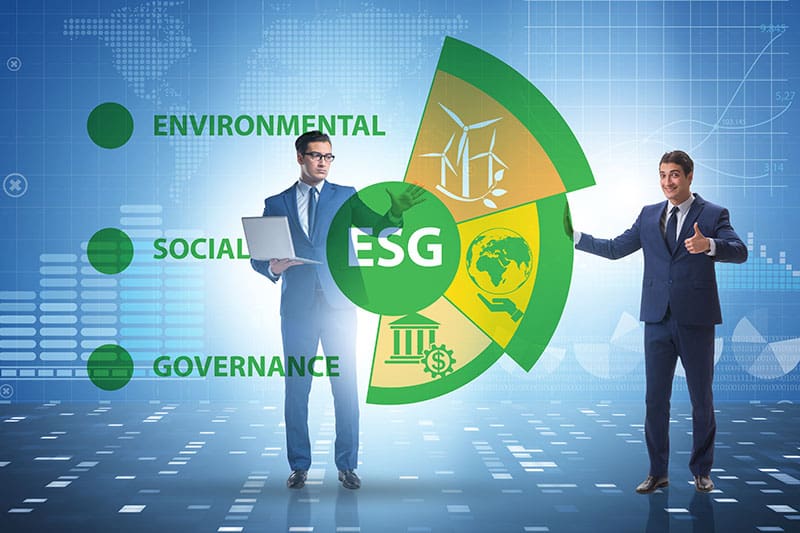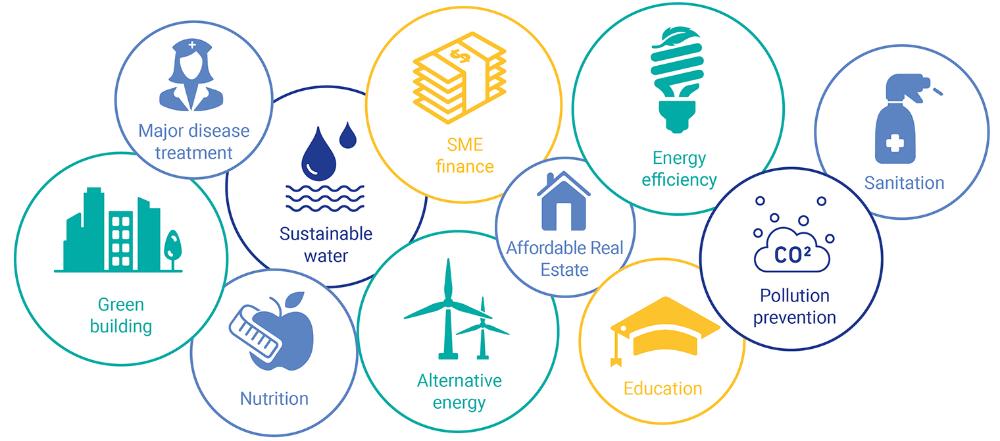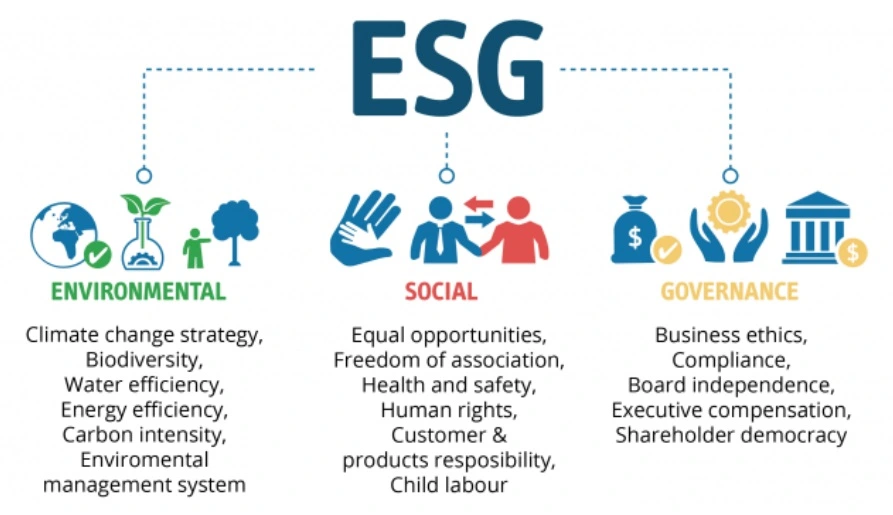Measuring the Impact of Sustainable Investments: it’s not just about making money. It’s about making a change. Sure, profits matter, but so does the planet. So does the way a company runs, treats people, and uses resources. I dive into how your green cash can truly make a difference. Think about it. You want your investments to do well, but you also want to sleep at night, knowing they’re doing good, right? Let’s dig into how we can check if that’s really happening.
Understanding the Scope of Impact Measurement in Sustainable Investments
Defining ESG Performance Metrics and Their Relevance
We often hear about ‘ESG’ in investing. But what does it mean? ESG stands for environmental, social, and governance. These are key areas we look at when we invest with care for people and the planet.
When we track ESG, we use special numbers called metrics. They tell us if our money helps or hurts these areas. It’s like a report card showing how well a company plays its part in being good to the world.
For example, these metrics check if a company keeps our air clean, treats people fairly, and runs without being sneaky. If a company scores high on ESG metrics, it means it’s doing good things while also making money.
The Role of Triple Bottom Line in Comprehensive Assessment
Now, let’s talk about something called the triple bottom line. It’s a fancy term, but it’s not too hard to understand. It’s all about looking at three things: people, planet, and profit.
In the past, businesses only cared about profit — how much money they make. But that’s changing. Now, we also look at how they affect people and our Earth. We ask, “Are they making life better? Are they protecting nature?”
With the triple bottom line, we find answers. It’s a way to see the full picture of what a business does. It makes sure we don’t forget about important stuff like clean water, happy workers, and fair rules.
By using this triple check, we make sure our investments make the world better. Not just for today, but for many years to come. It’s about making money with a heart.
So when we talk about measuring impact in ESG investing, think of it as checking how a company is doing in class. Are they a star student in taking care of the world, or do they need to do more homework? And when we look at the triple bottom line, we make sure we aren’t missing anything important. All this helps us pick where to put our money so it does the most good.
We want bright futures for everyone. To get there, we need to be smart about where we put our dollars. When we use these tools, we’re choosing to invest in a world we’d be proud to leave to our kids. That’s impact measurement at its best.
Measuring the Impact of Sustainable Investments: Beyond the Bottom Line
Analyzing Tools and Methodologies for Measuring Impact
Utilizing SROI and Green Investment Impact Assessment
Measuring impact is key in ESG investing. We look at how much good investments do. We use cool tools for this. One is called Social Return on Investment (SROI). It shows how social and environmental goals meet money goals. It’s like a report card for our planet and people. Another tool is green investment impact assessment. It looks at how green investments work. This means we check if they really help air, water, and the Earth.
Embracing Sustainability-Linked Bonds Assessment and ESG Impact Reporting Standards
Another tool we use is the sustainability-linked bonds assessment. Bonds that help the environment are judged on how well they do this. This tool measures their good effects. Along with this, we use ESG impact reporting standards to tell others about our findings. This is how we keep score of how investments are doing for earth and society.
When companies make money and care for the planet, they win twice. That’s what ESG investing is about. It’s not just about more money. It’s also about cleaner air and happier people. With tools like SROI and green assessments, we find out if investments really help. We make sure money is making a difference.
In the world of ESG investing, we don’t just guess. We use fancy math and big data. We crunch numbers to see if green bonds are doing good. We also check if funds that say they’re ethical really are. Through tools like SROI, we spot which investments are stars. And we guide others to invest in a better future.
So, when we talk about ESG, it’s not just buzzwords. It’s about real actions and their results. It’s making sure that the money talks—a talk of a cleaner, fairer world. And each tool, like the sustainability-linked bonds assessment, helps us tell the truth. It separates the green champs from the wannabes.
Investing with an eye on ESG is like gardening. We pick the seeds — the investments — with care. We water and watch them with tools like ESG data analysis. And we hope they grow into strong trees. Trees that clean the air and offer shade — that’s our profit and our planet’s health. It’s not quick money but a long-term gain for all.
Tools like the triple bottom line evaluation and benchmarks for ESG show us the full picture. They remind us that it’s not just about growing wealth. It’s about growing health, communities, and a sustainable world. They push companies to think big. To act right for people and the planet, not just their wallets.
In sum, my job is like a detective’s. I dig into investments and find their true color. I use SROI and other assessments to see if they are green or just greenwashed. This way, we can back the heroes and fix what’s broken. We make sure every dollar counts for a better world. And that’s investing in the future — the smart way.
Integrating Risk and Return in Sustainable Investment Decisions
Assessing Climate Risk and its Financial Implications
Let’s dive right in: when we talk about climate risk in investments, we’re looking at how things like extreme weather can lead to money lost. But it’s not just about losing cash. It’s also about seeing ahead, knowing what might happen to our planet, and how that pushes costs up or down. So, what are we doing to get on top of this? We’re measuring the risk. We’re asking, “How could the weather mess with this investment?” We track and gauge all this because, in the end, we want our money to work for the planet.
Now, the answer is precise and gets to the point. However, if we expand a little, we see that climate risk is about understanding and predicting potential financial losses or gains. It’s about future-proofing investments against climate change. We look at how shifts in weather patterns or new green laws might change things. We’ve got to fold this info into investment decisions. By doing this, we can pick better spots for our money that help the planet and avoid problems.
The Interplay Between SRI Monitoring and Long-term Sustainability Returns
SRI monitoring, what’s that all about? Think of it like keeping a close eye on your investments to make sure they’re staying true to your values of doing good for society and the environment. It’s about making sure the cash you put in today is helping build a better future, not just for us right now, but for our kids, and their kids too.
Why blend SRI monitoring with aiming for long-term returns? Because when you’re in it for the long haul, you’re not just chasing quick profit. You care about keeping the planet in good shape. This means watching how firms act about social issues or pollution, and choosing those that are in it for the long game, just like you.
In more detail, SRI monitoring looks at how companies do business. We want to see them treating people fairly, keeping the air clean, and being straight up with everybody. This watchful eye is key because it aligns our money with our morals. By focusing on sustainability, we let companies know they can’t just think about today—they have to plan for that better world we’re all hoping to see.
SRI monitoring isn’t just about checking boxes; it’s about driving companies to be their best. It’s about connecting our money to clean air, good jobs, and healthy communities. It’s a balance: we want our investments to grow, but we also want to feel good about where our money sleeps at night. Splendid, right? When we pair SRI and long-term returns, we aim high. We gun for profits that don’t sell out our planet. It’s about money with a mission, and that’s something to believe in.
Advancing ESG Strategy with Impact-Driven Investment Approaches
Establishing Effective Benchmarks for Sustainable Investments
We’re all in deep with saving our planet and making money last. Investment is no game, especially when we talk about sustainable investing. It’s tough to know if we’re truly making a mark, isn’t it? Benchmarks tell us that. They’re like grades on a report card for our investments’ health and kindness to the world.
You ask, “What makes a good benchmark for sustainable investing?” First off, it’s about setting clear, smart goals. These goals must fit the world’s needs and your wallet. Imagine a world where all companies look to do good. That’s the goal.
One cool tool we use is the triple bottom line. It’s like putting on glasses to see clear. It shows us how companies are really doing – with people, planet, and profit. This stuff matters.
We’ve also got the SROI, that’s social return on investment to you and me. It’s a number that tells us what bang we get for our buck in social good. It’s like investing in a friend’s lemonade stand ’cause they’re doing good stuff with the cash.
These benchmarks help us pick the good apples from the bad. We want our money to grow in the right gardens. It’s about green, but the color of trees, not just cash.
Driving Change with Innovative ESG Investment Strategies
Now, let’s get to the cool part – how we shake things up with ESG investing. It’s not just about the now but the long run too. We need plans that last, ones that make a splash and keep the pool clean.
First off, we’ve got to understand what ESG is. It’s a fancy way to say we care about the earth, its people, and how companies are run. We measure things like how much smoke a factory blows out, and if they treat their workers right.
We’re always digging up new ways to invest with heart. We look at big ideas, like windmills and solar panels. That’s what we call renewable energy. It’s power from stuff that never runs out, like the sun or the wind.
Another hip trick is green bonds. When you buy them, you’re tossing your coin into projects that help our world stay clean and cool.
We also need to peek at what companies are doing on the social side. Like how they handle being fair and keeping things safe at work.
All in all, we want companies to grow, but they’ve got to do it the right way. We cheer on firms that care about tomorrow, not just their pockets today.
Let me lay it down for you; we’re looking at everything – profits, people, and our planet. It’s the full picture. And the more folks that hop on this bus, the better. So here’s to making smart choices, spending where it counts, and always aiming high for that triple win!
In this post, we dived into how to measure the true impact of sustainable investments. First, we looked at ESG performance metrics and why they matter. We also discussed how to weigh social, environmental, and financial gains together. Then, we explored tools like SROI and how to report ESG impacts well. We considered the risks, like climate change, and how they affect money. Finally, we learned to set good goals for ESG investments and to pick strategies that make a difference.
I believe using these tools and ideas can help us invest in a future that’s good for our planet and our wallets. By focusing on ESG, we can make smarter choices that help us grow our money while taking care of the world around us. Let’s invest with impact!
Q&A :
How does one measure the impact of sustainable investments?
To gauge the effectiveness of sustainable investments, one typically considers both financial performance and the achievement of environmental, social, and governance (ESG) goals. Metrics such as ESG scores, impact reports, and the Social Return on Investment (SROI) are often used to quantify how effectively an investment aligns with sustainable practices.
What are the key indicators for assessing sustainable investment outcomes?
Investors look at various indicators to assess sustainable investment outcomes, including carbon footprint, water usage, labor practices, gender diversity, and community impact. These indicators provide a comprehensive understanding of an investment’s broader effects on society and the environment, in addition to traditional financial returns.
Can sustainable investments provide competitive financial returns?
Sustainable investments can provide competitive financial returns. Multiple studies have indicated that investments with strong sustainability practices may offer comparable or even superior returns compared to traditional investments, as they may be better positioned to manage risks related to social and environmental issues.
What is the role of ESG reporting in sustainable investments?
ESG (Environmental, Social, and Governance) reporting plays a pivotal role in sustainable investments by offering transparent insights into a company’s operations concerning its ethical, sustainable, and governance-related practices. This level of reporting helps investors make more informed decisions about the sustainability impacts of their investment portfolios.
How do sustainable investment impacts contribute to global sustainability goals?
Sustainable investment impacts contribute to global sustainability goals by steering capital towards companies and projects that prioritize and progress towards environmental conservation, social equity, and good governance. This strategic investment approach supports the United Nations Sustainable Development Goals (SDGs) and propels widespread sustainable development.



